If you’re a weather geek, you probably already know that Dark Sky, one of the most popular weather apps around, has been acquired by Apple and is probably being integrated into iOS 14. As a result, anyone who uses an Android device and has the Dark Sky app is going to lose access on July 1st. In addition, a variety of other apps (some not even weather-related) will lose access to the Dark Sky API.
If you’re an Android user with Dark Sky and you’re wondering where to go now for your weather report, there are a few alternatives to choose from. But first, here are a couple of things to consider.
Several Android weather apps have been found to ask for more permissions than they need and to have shared location data with advertisers and other third parties. These privacy issues are detailed in a Vice article by Jason Koebler.
One suggestion is to simply use the weather app that Google supplies with its OS. A way to get that somewhat elusive app to live on your home screen is described on GadgetHacks.com. We tried it, and it works quite nicely.
If the Google app isn’t enough for you, here are six alternatives. All have free versions with ads, and all have paid versions that not only remove the ads but add other features.
Besides the price of each app, I’ve also listed all the various permissions requested as listed on its Google Play entry. Keep in mind that some of these permissions are specific to certain features, so if you never use the feature, you won’t be asked for permission. Some can be controlled within the app. You can also refuse specific permissions that you feel are over the top by going to “Settings” > “Apps & notifications,” finding the app, selecting “Permissions,” and then tapping on the specific permission you want to deny.
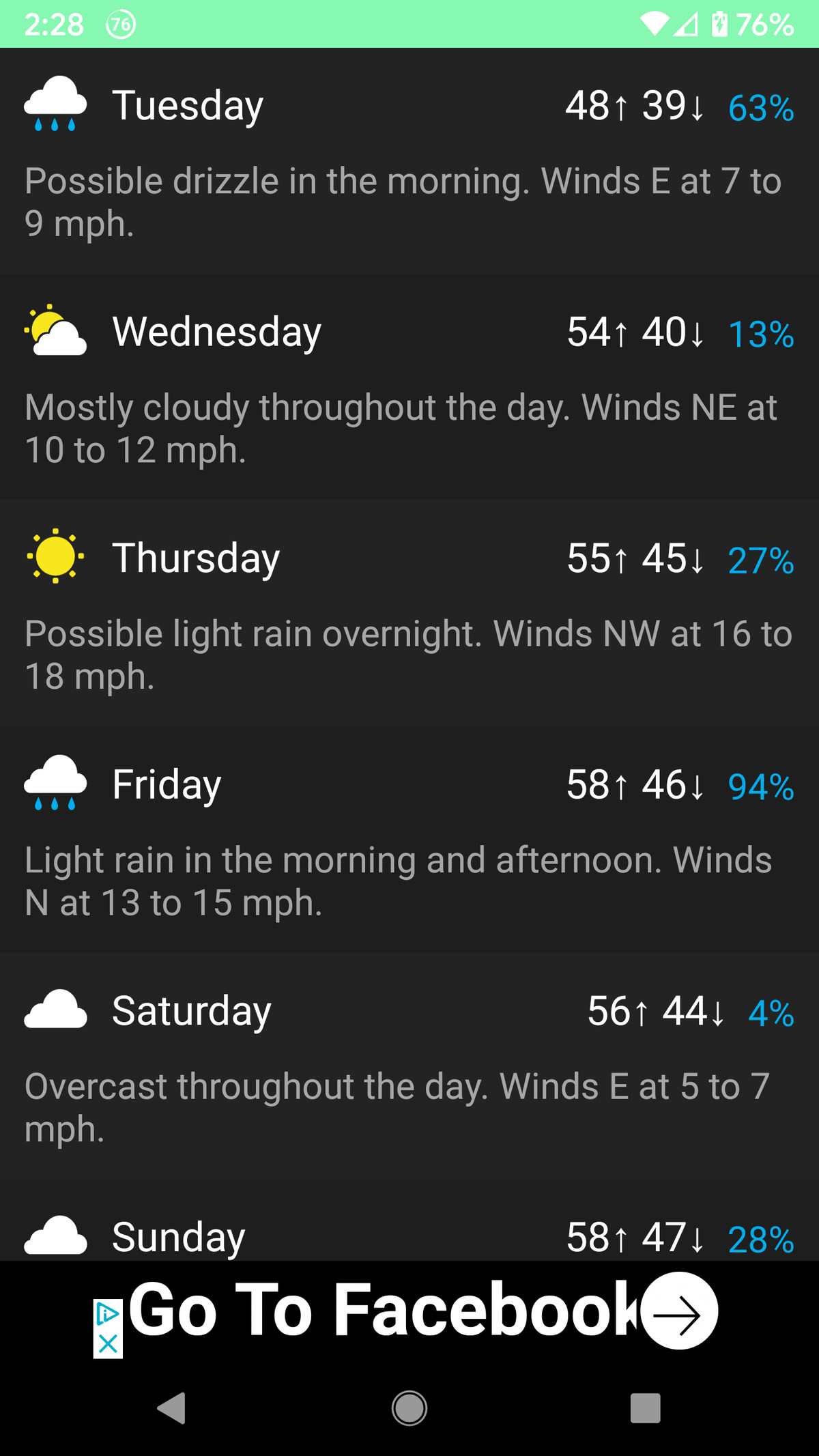
Carrot may be known less for its weather predictions than for its personality, which offers tongue-in-cheek commentary in audio and / or text on the happenings of the day. (Today, for example, it snarked, “I’m sending bad weather to all the people who refuse to wear masks to hide hideous faces.”) In fact, you can set its personality (friendly, snarky, homicidal, or overkill) and its politics (liberal, conservative, centrist, libertarian, communist, or apolitical) to suit your own tastes.
All that being said, Carrot is a solid, good-looking app that offers a reasonable amount of data on current and upcoming weather. It has been using the Dark Sky API for its data, which will disappear by the end of 2021. However, according to a tweet by creator Brian Mueller, other data sources will be available.
- Price: Free with ads. “Premium Club” removes the ads and offers a widget and other features for $0.99 per month or $3.99 annually.
- Permissions requested: photos / media / files, Wi-Fi connection information, storage, location, and others, including control vibration and network connections.
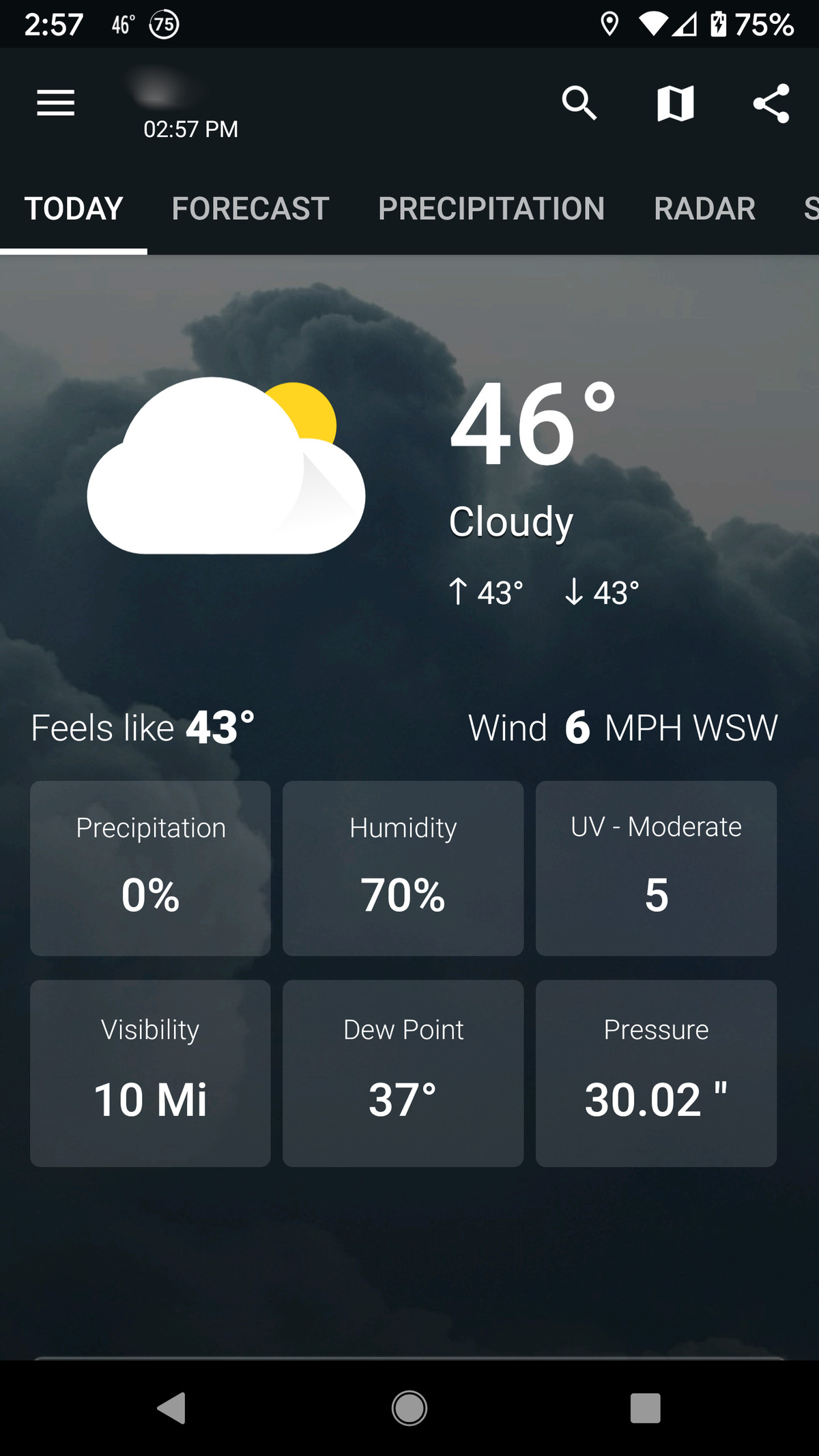
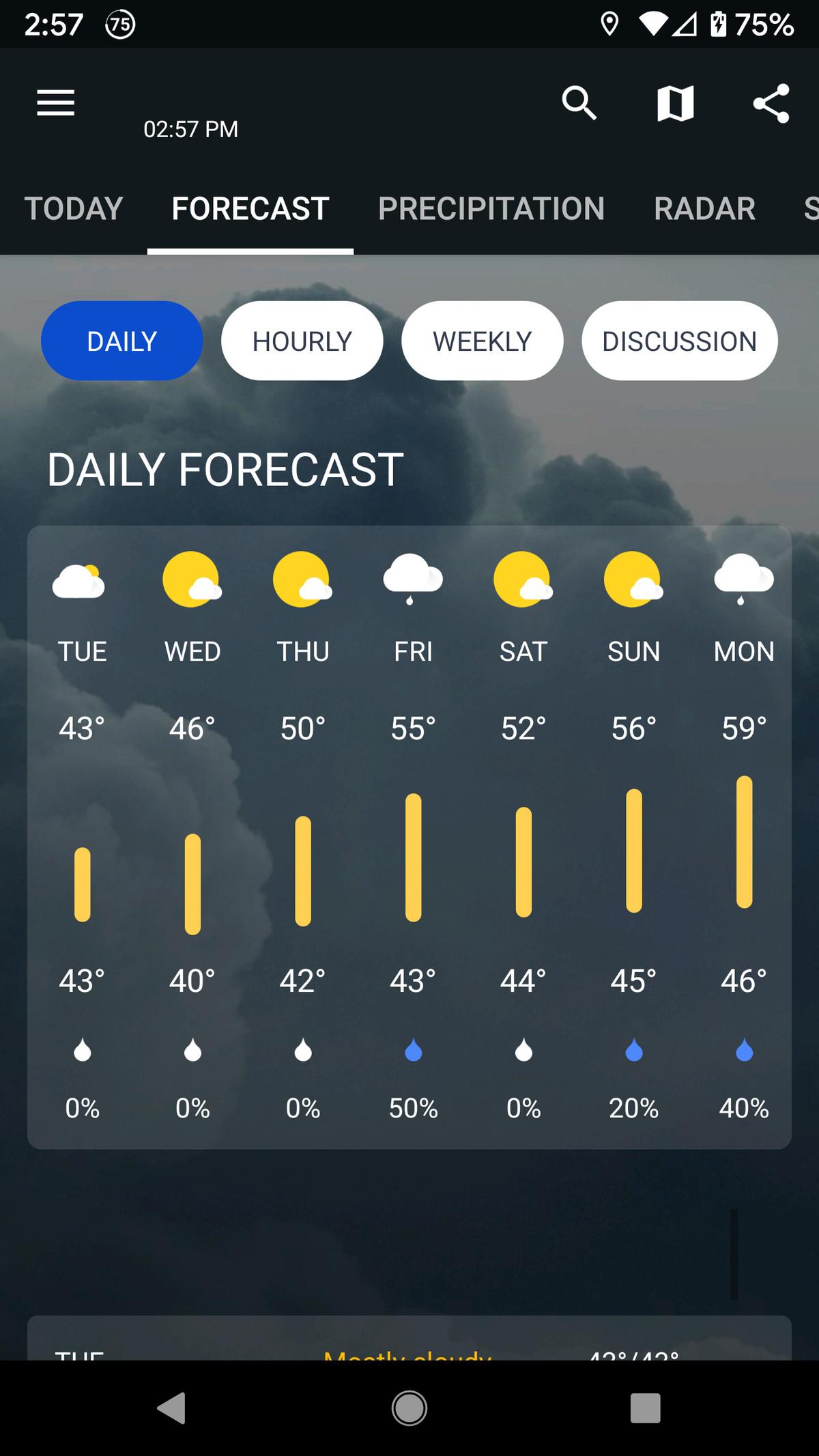
1Weather is a well-known app with a variety of screens showing the current weather, the forecast, precipitation, radar, and the Sun and Moon rise and set, among others. I personally found the interface a bit crowded, but it does offer a lot of information, and it even has its own TV weather forecaster. Unfortunately, besides the usual scrolling ads at the bottom, the app also includes full-page pop-up ads; one that I got was from a political advocacy group that I found annoying. According to the app’s website, it gets its info using the Weather2020 platform, along with meteorologist Gary Lezak.
Price: Free with ads. Without ads: $1.99 one-time purchase.
Permissions requested: photos / media / files, Wi-Fi connection information, storage, location, and others (receive data from internet, view network connections, prevent device from sleeping, run at startup, full network access, set wallpaper, control vibration, read Google service configuration).
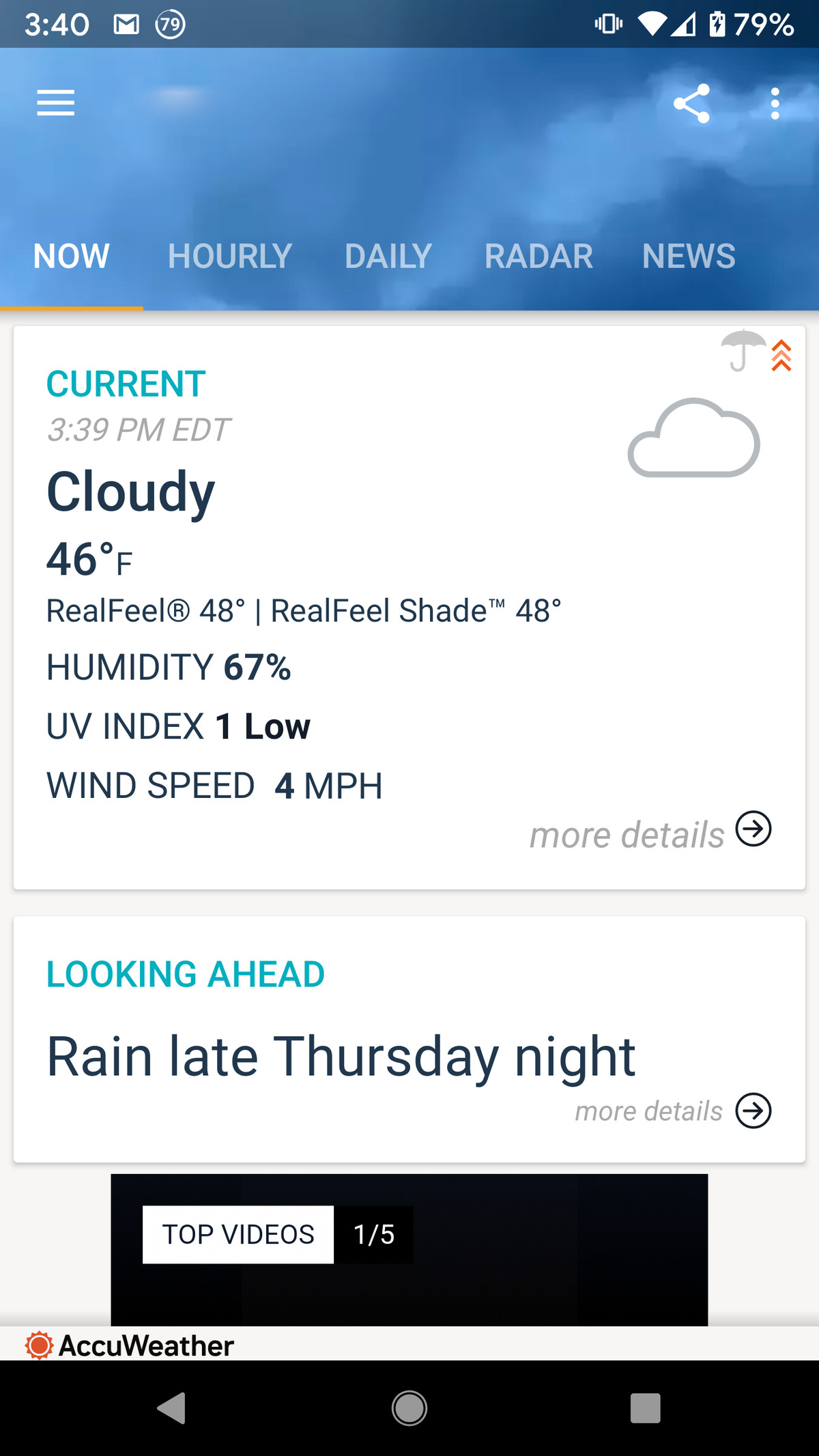
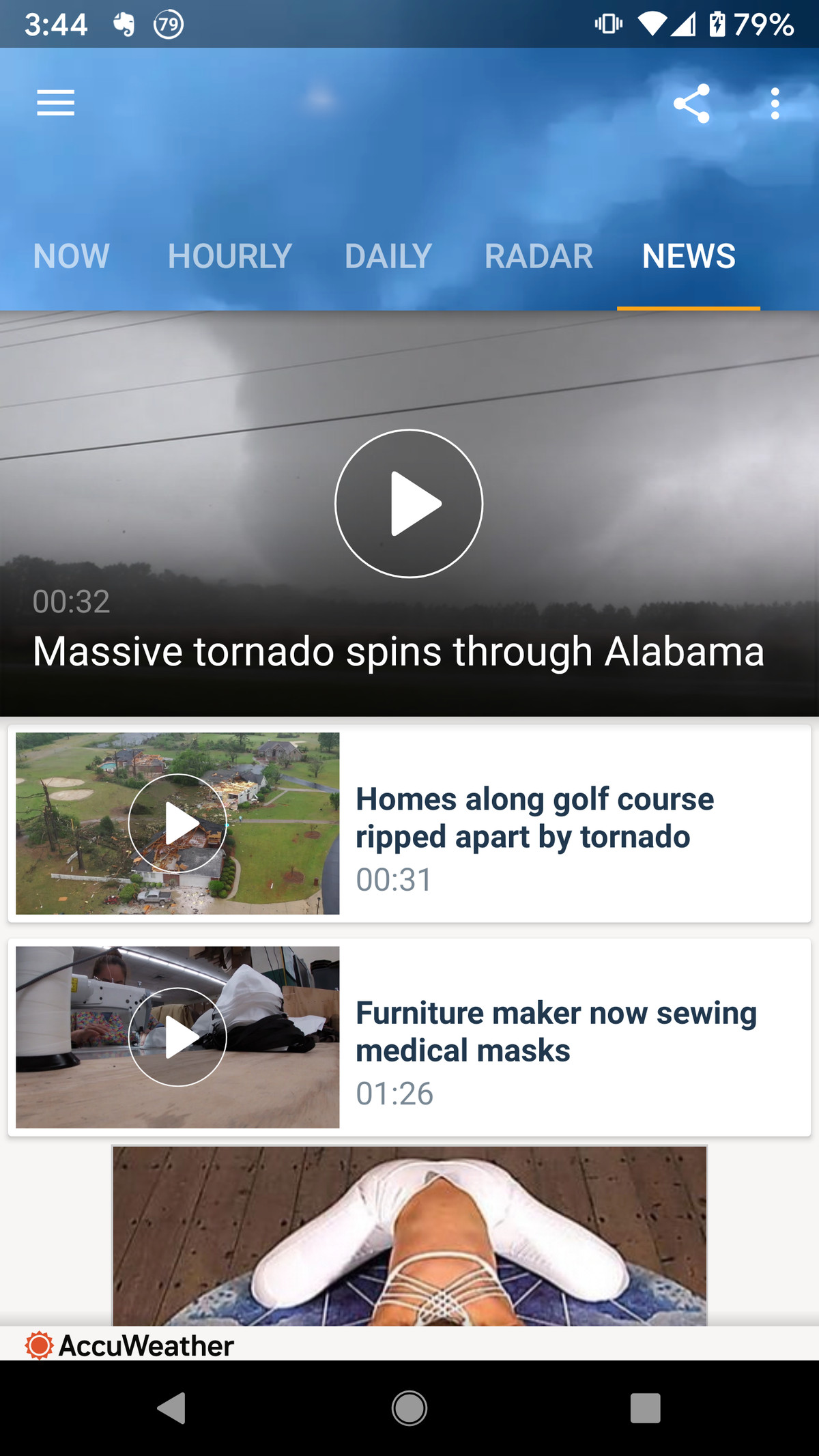
Anyone who ever watched cable TV or listened to the radio is probably familiar with AccuWeather, which has been used by many stations for their forecasts. According to its website, it collects its own data using a combination of meteorologists, a global forecast engine, and other sources. The app has a reasonably clean interface, although the data was a bit too sparse for my taste. The front page gives you just the facts — the current weather, including humidity, wind speed and UV index, and a general idea of tomorrow’s weather; you can click on the “more details” links to get to the nitty-gritty. You are also invited to get notifications for cold or wet weather. A news section offers videos on the latest weather-related disasters.
Price: Free with ads or $3.99 for no ads and an additional 10 days of forecasts.
Permissions requested: storage, microphone, photos / media / files, location, Wi-Fi connection information, others (receive data from internet, disable your screen lock, prevent device from sleeping, draw over other apps, run at startup, access Bluetooth settings, full network access, read Google service configuration, change system display settings, Google Play license check, pair with Bluetooth devices, view network connections, control vibration, connect and disconnect from Wi-Fi).
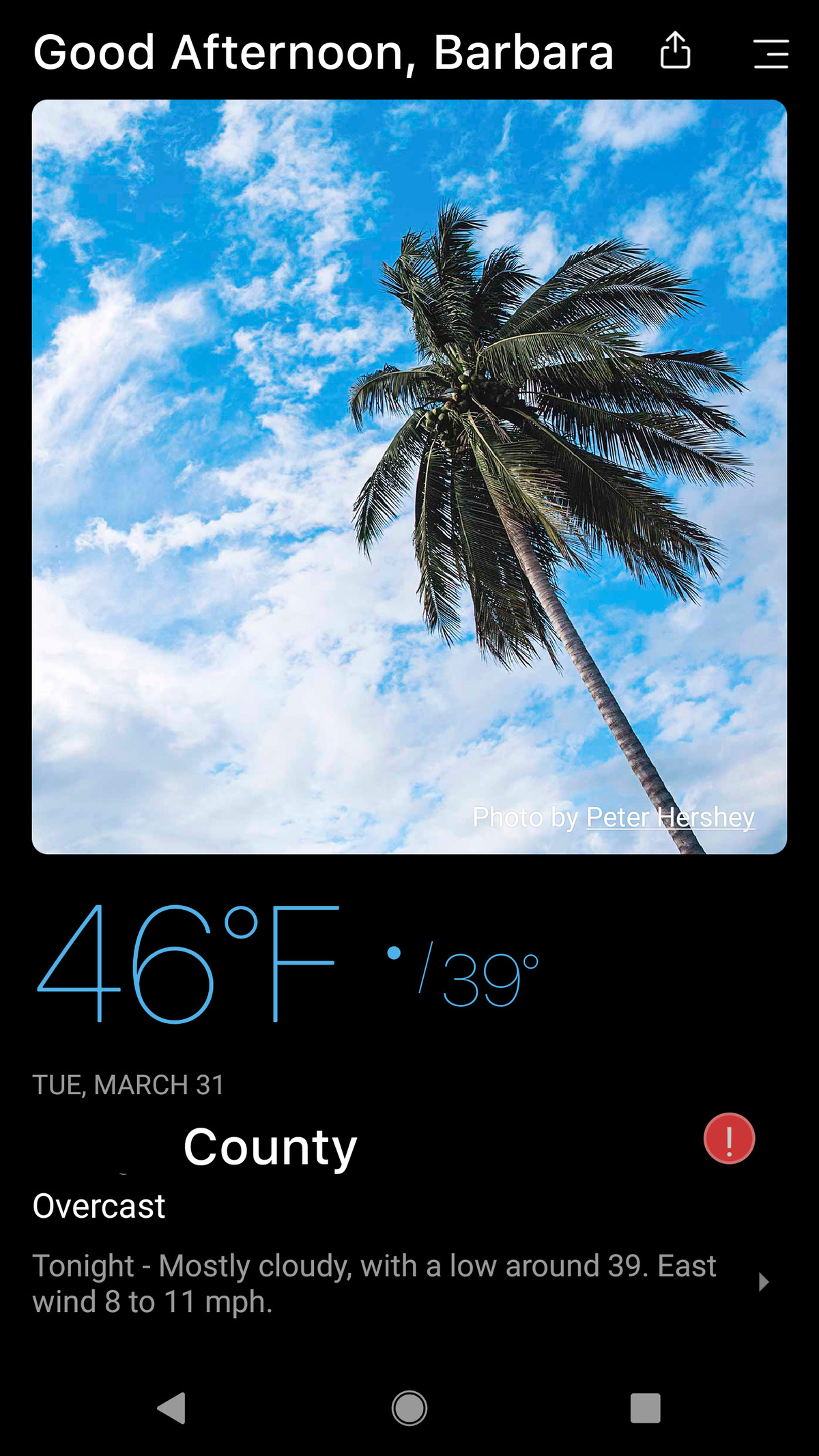
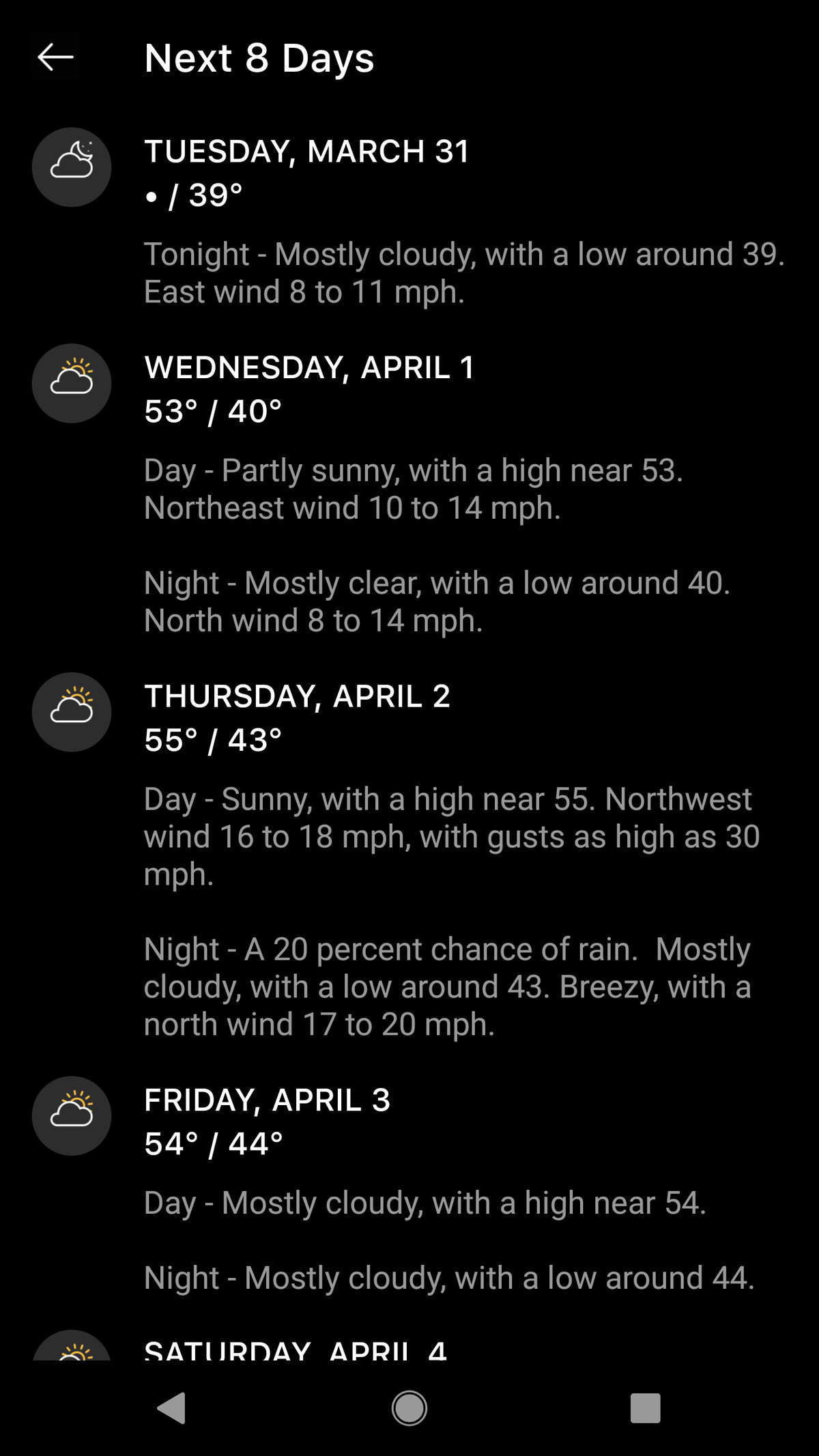
Today Weather may be the best-looking of all the apps listed here. It’s got a straightforward interface that starts with a photo and today’s weather, and you can scroll down for details on the weather for the next 24 hours and seven days, air quality, and other categories. You can scroll left for more details on any of the categories. If you’re in the US, you automatically get your data from weather.gov (which is served by the National Weather Service); paying customers can choose from a variety of data sources.
Price: Free with ads, $1.99 for six months, $2.99 for one year, or $6.99 forever. The paid options remove ads, let you choose your data source, and add a few other features.
Permissions requested: location, photos / media / files, storage, camera, Wi-Fi connection information, others (receive data from internet, control vibration, run at startup, full network access, prevent device from sleeping, view network connections).
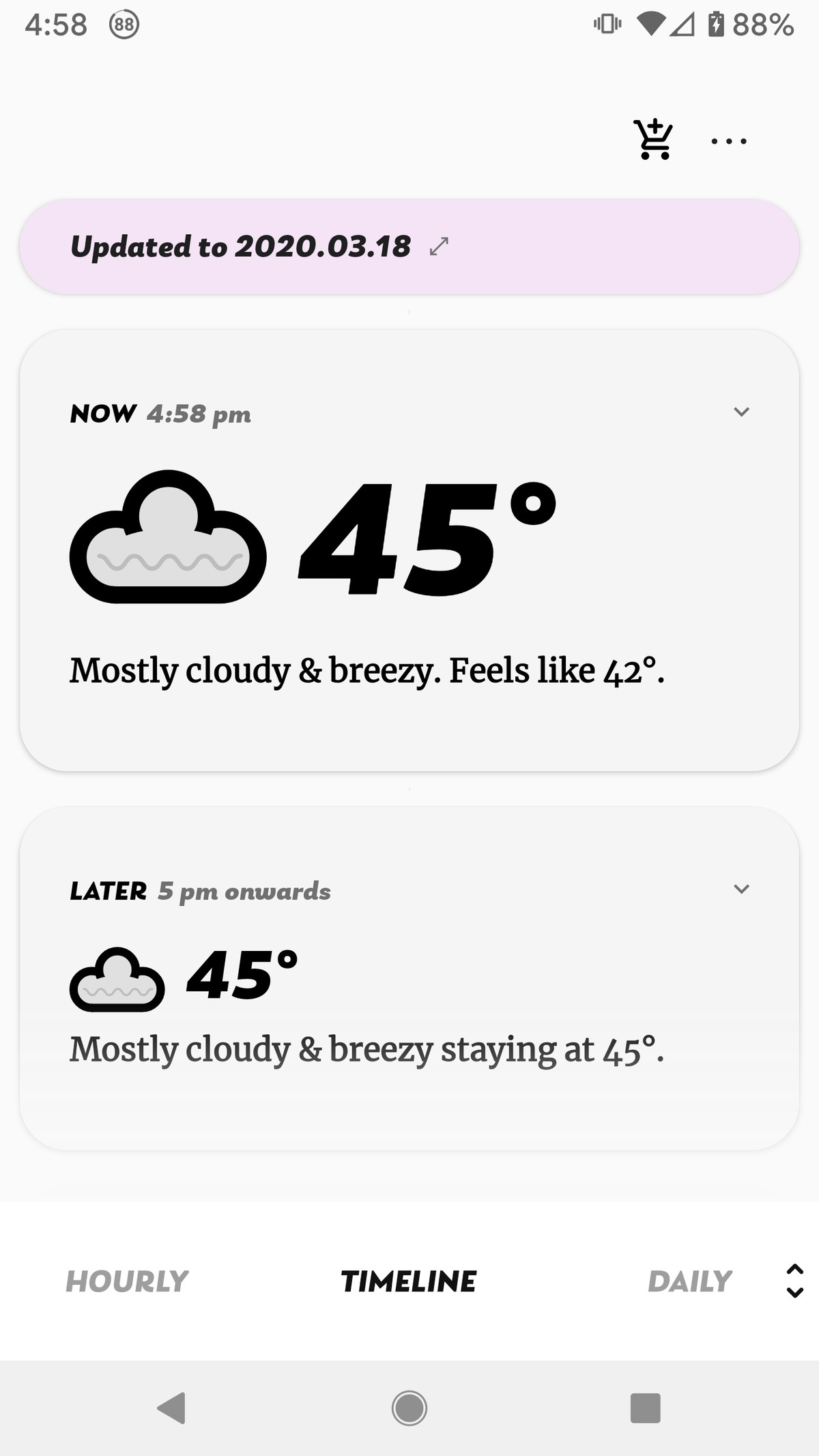
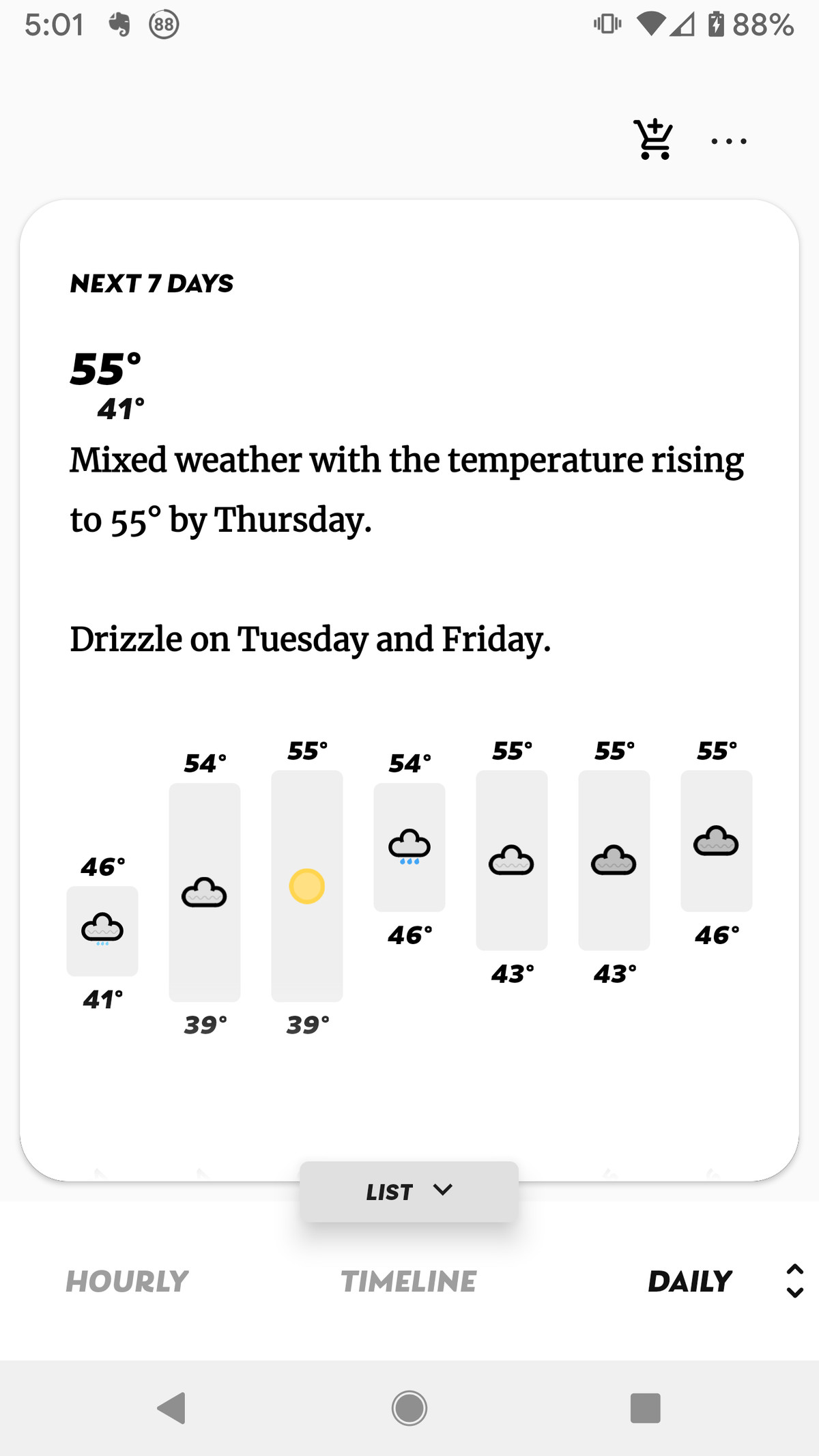
Appy Weather bills itself as “the most personal weather app.” It’s certainly privacy-conscious; at the outset, it asks if you want to check the weather via your current location (in which case it requires permission), or do a search for your location (in which case it doesn’t ask for your location permission). The interface was one of the most straightforward and simple I’ve seen, especially its timeline, which lets you scroll down to see the current weather and the upcoming forecast. You can also scroll from left to right at the bottom to see the temperature, “feels like,” precipitation, etc. Appy Weather currently uses Dark Sky for its data; according to the developer, they are looking for alternative data sources.
Price: Free version with ads or $3.99 annually for no ads, radar, notifications, widgets, and other features.
Permissions requested: location and others (control vibration, view network connections, full network access, prevent device from sleeping, run at startup, set an alarm).
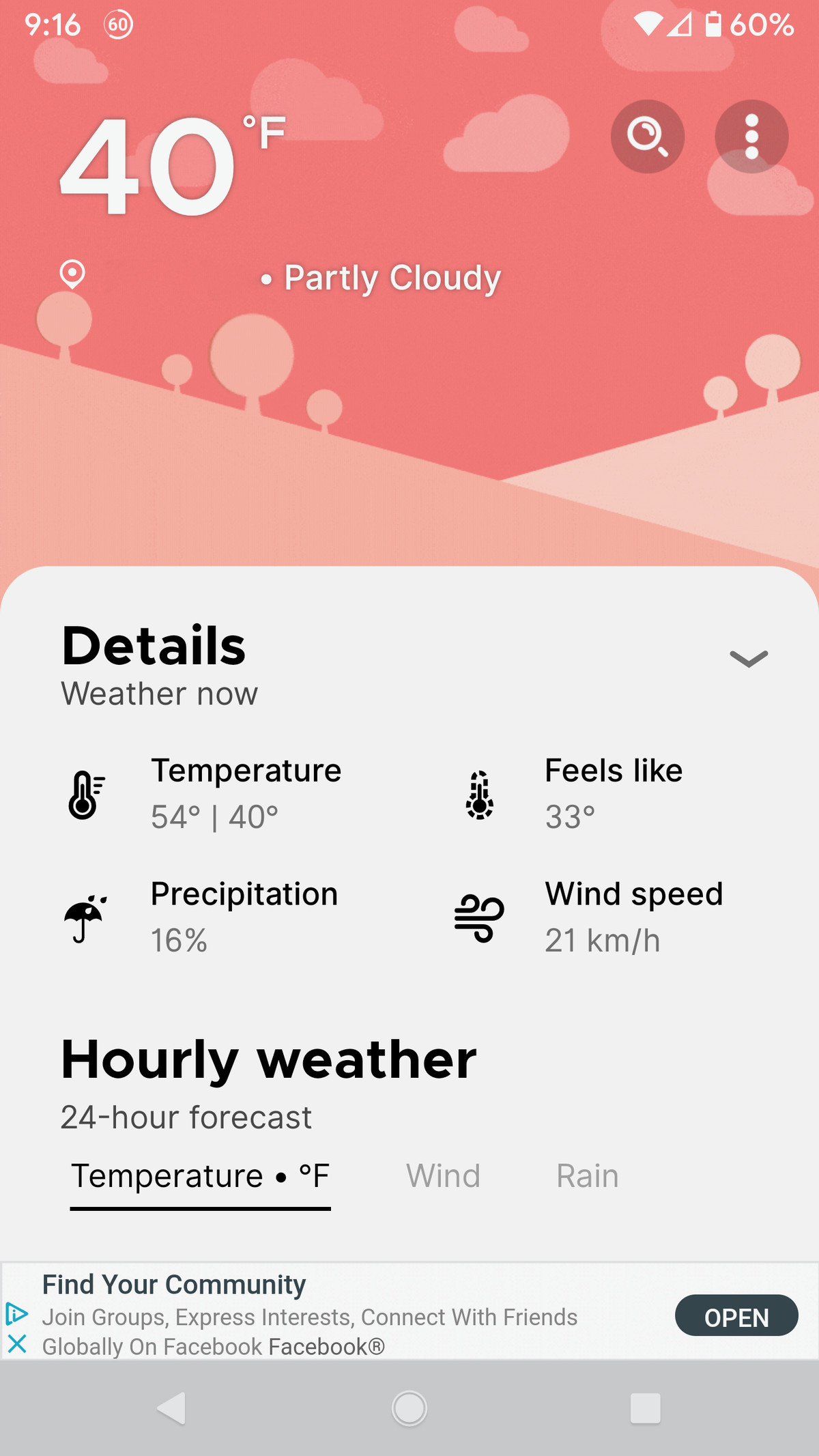
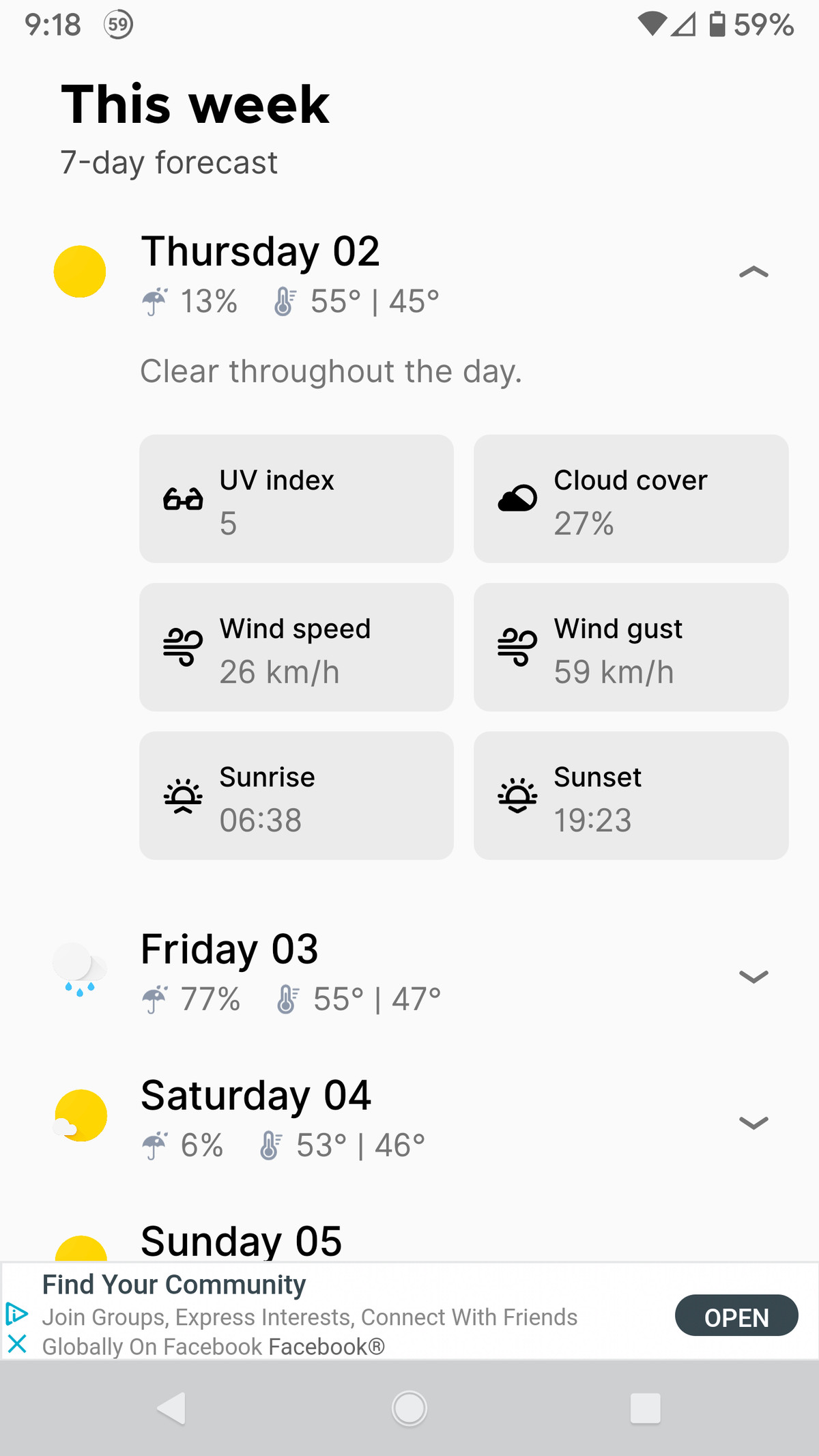
Like Appy Weather, Overdrop has a simple, easy-to-understand interface with a reasonable, if somewhat limited, selection. You can see the current weather, hourly weather, and weekly forecast; select a drop-down arrow to get more details. However, its main advantage may be that, if you’re a paying customer, you can access 51 different weather widgets — something that widget fans may find worth the price. At the time of the review, you could choose between Dark Sky (which, presumably, will be going away soon) or Weather Bit if you used the free version; subscribers can also select AccuWeather.
Price: Free with ads, $0.99 per month, $2.19 annually, or $7.49 forever. The paid options remove ads, unlock additional providers, add 51 widgets, and provide other features.
Permissions: storage, photos / media / files, storage, location, others (receive data from internet, run at startup, prevent device from sleeping, set an alarm, Google Play license check, control vibration, full network access, view network connections).
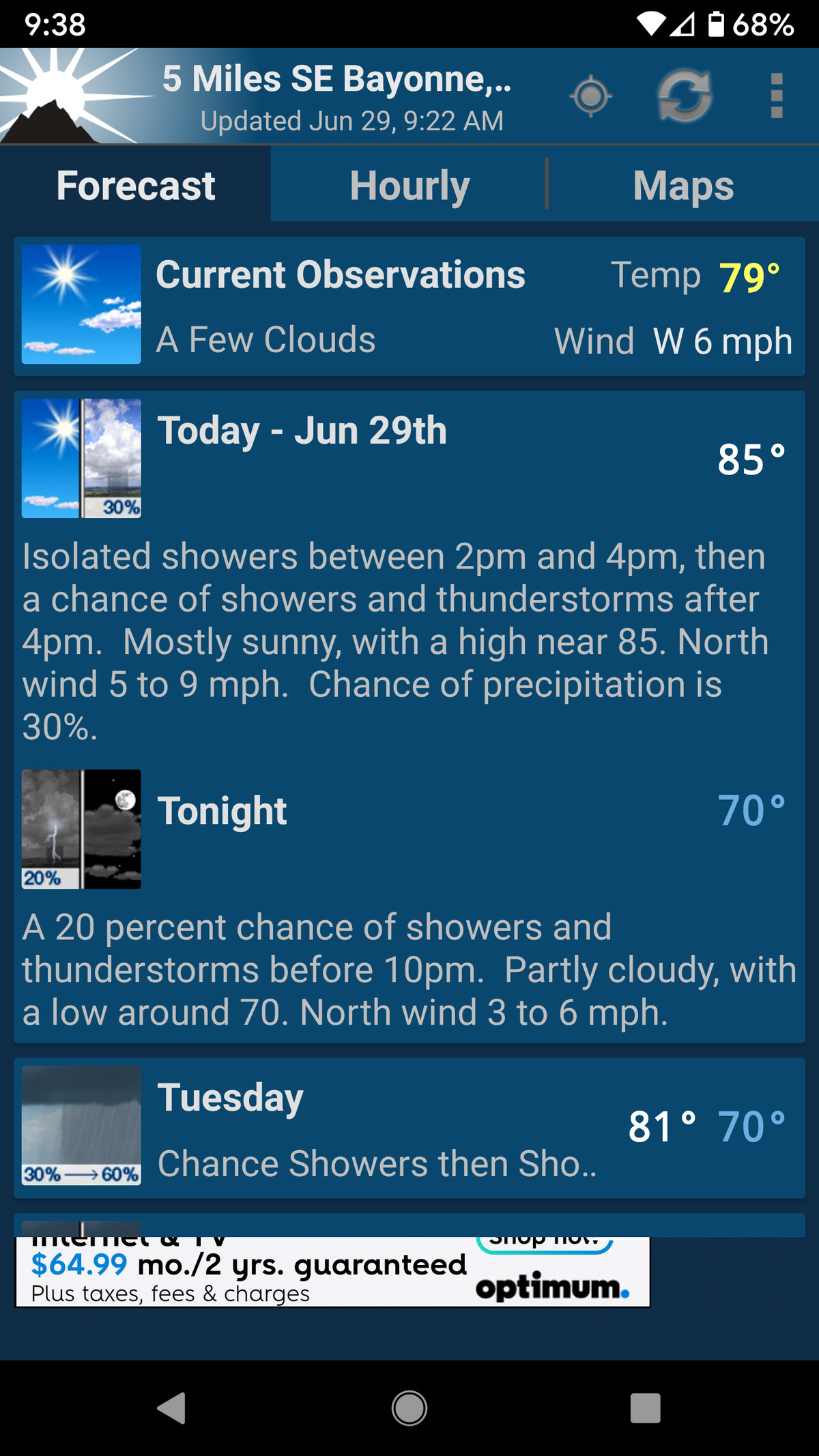
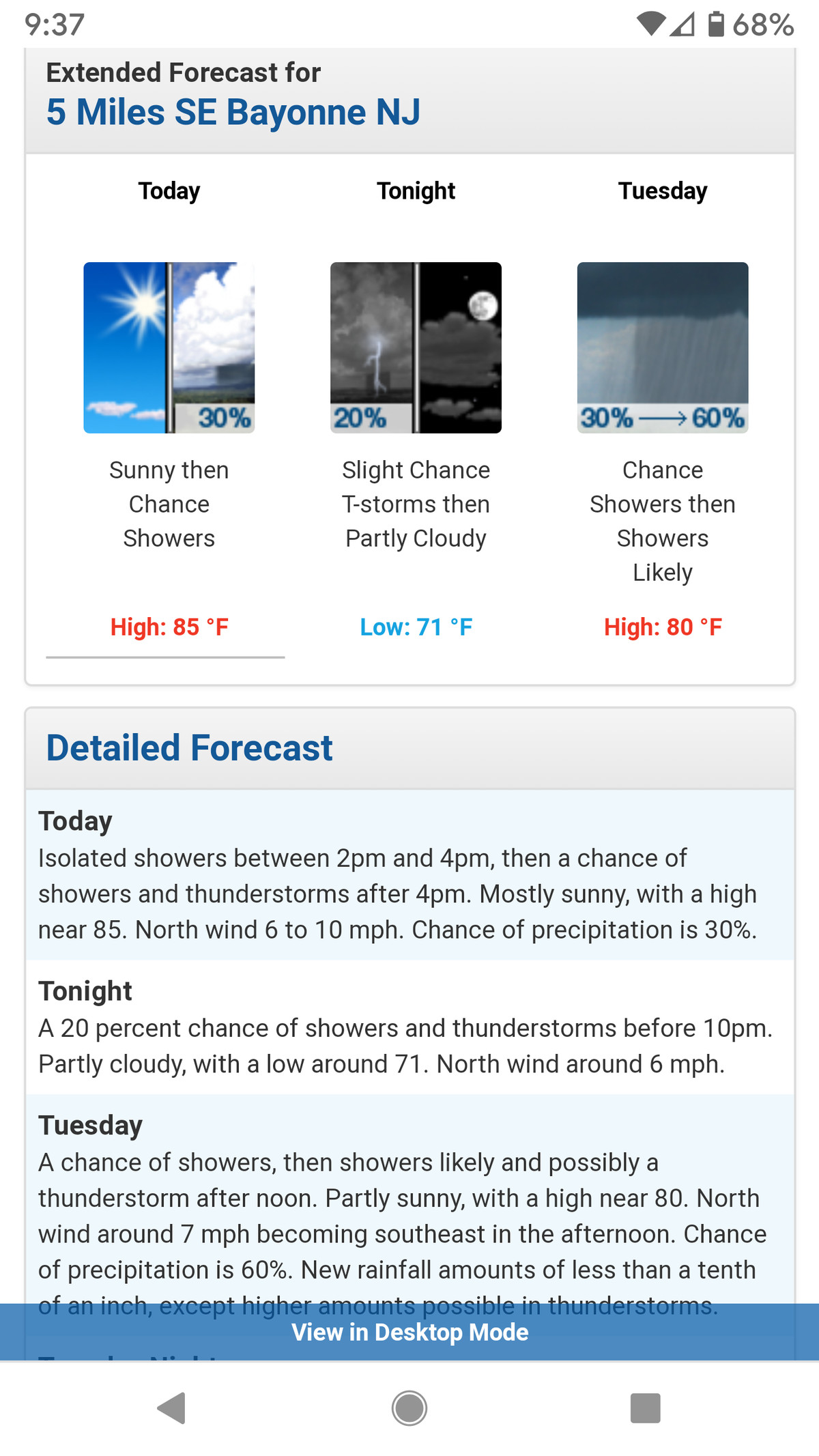
This simple app goes to the source: the National Weather Service, run by the National Oceanic and Atmospheric Administration (NOAA). It presents data from the NOAA in a clear, easy-to-read format: it opens to the weekly forecast, and you can tap on each day to get more data. You can also get an hourly forecast and a weather map.
By the way, if you want to get your weather info directly from the NOAA, you can go to the site (weather.gov), enter your zip code to get your local forecast, and then save the mobile page to your home screen (by tapping the three “More” dots in the upper-right corner of your browser and then selecting “Add to Home screen”).
Price: Free with ads. $1.99 version removes ads and allow more than three saved locations.
Permissions: storage, location, photos / media / files, others (receive data from internet, full network access, prevent device from sleeping, view network connections control vibration, run at startup)
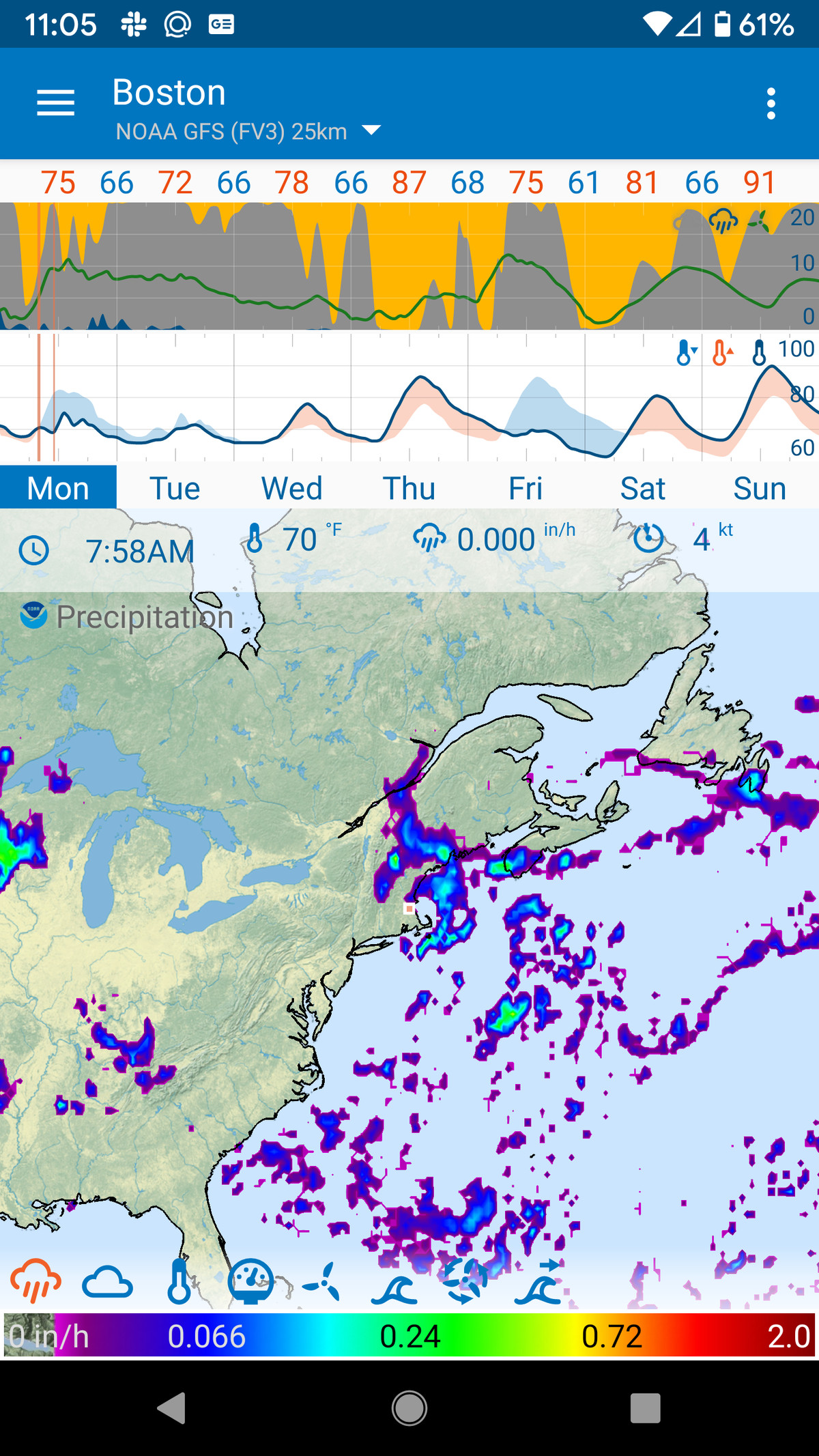
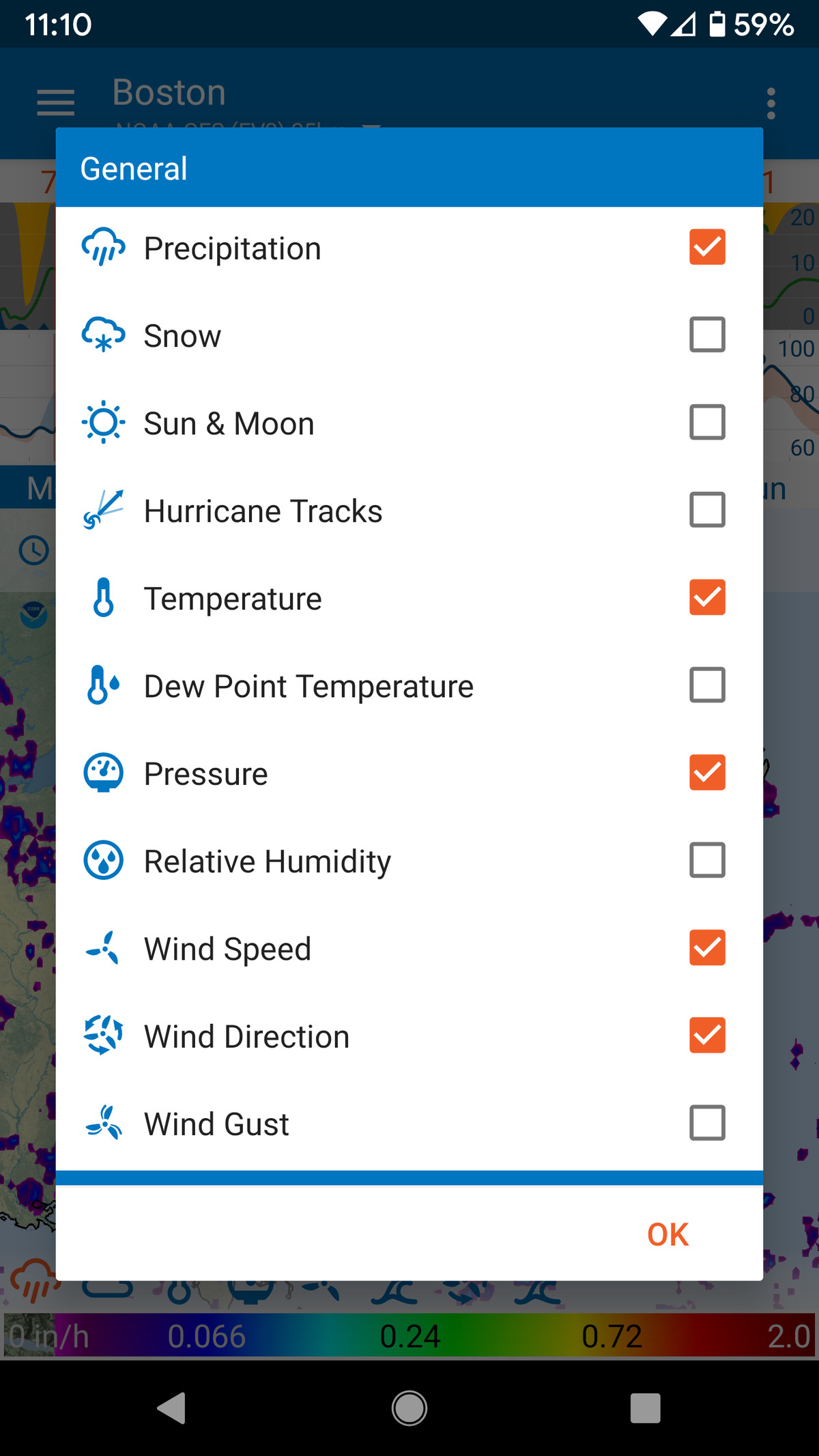
It’s immediately apparent that FlowX (once known as WeatherBomb) is for weather nerds: when you first install it, it opens to a weather map and temperature / humidity charts rather than the usual text-based weather summary. You get a seven-day forecast; slide your finger across the screen for each day’s forecast. The free app gives you a choice of getting data from the NOAA or CMC (Canadian Meteorological Center); the Pro version gives you more map styles, a graph editor, and access to more focused NOAA data for $4.99 / year. The Silver Pro subscription ($9.99 / year) adds additional international sources, and the Gold Pro ($19.99 / year) even more, including the RTOFS (Global Real-Time Ocean Forecast System).
Price: Free; $4.99 / year version offers additional features; $9.99 / year version adds international sources; $19.99 / year version provides additional resources.
Permissions: storage, location, photos / media / files, Wi-Fi connection, others (receive data from internet, full network access, prevent device from sleeping, view network connections)
Update June 29th, 3:42PM ET: This article was originally published on April 1st, 2020, and it has been updated to include two new apps and to update several of the entries.

Introvert. Beer guru. Communicator. Travel fanatic. Web advocate. Certified alcohol geek. Tv buff. Subtly charming internet aficionado.